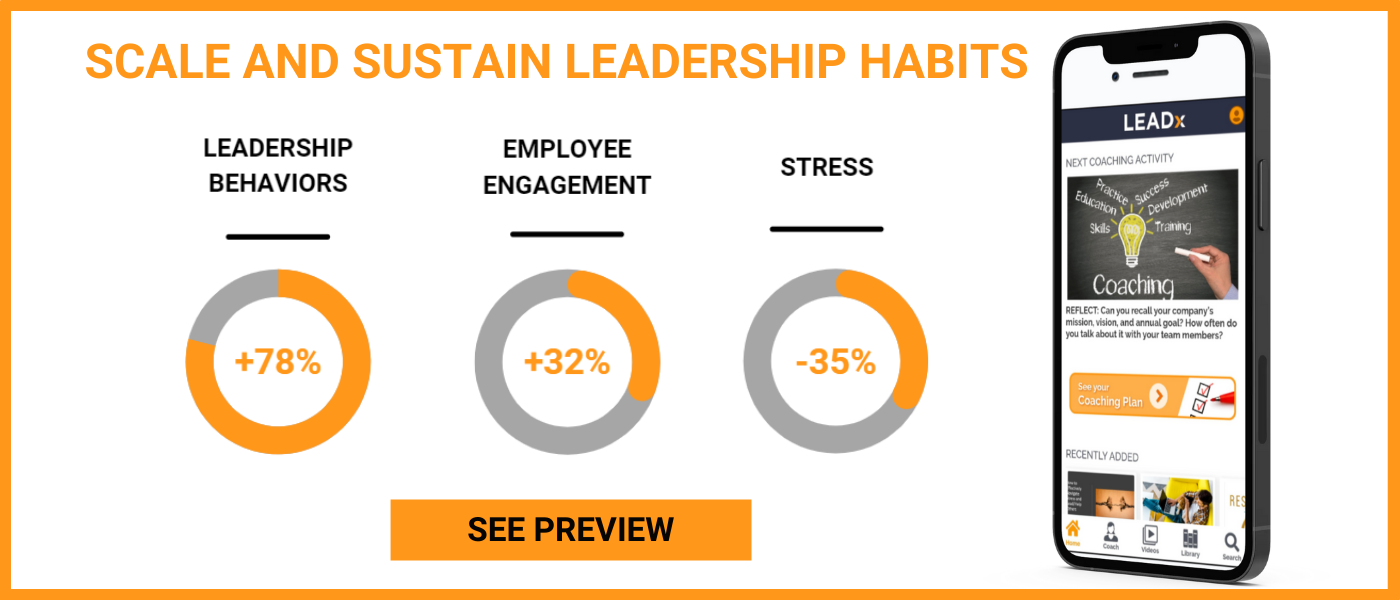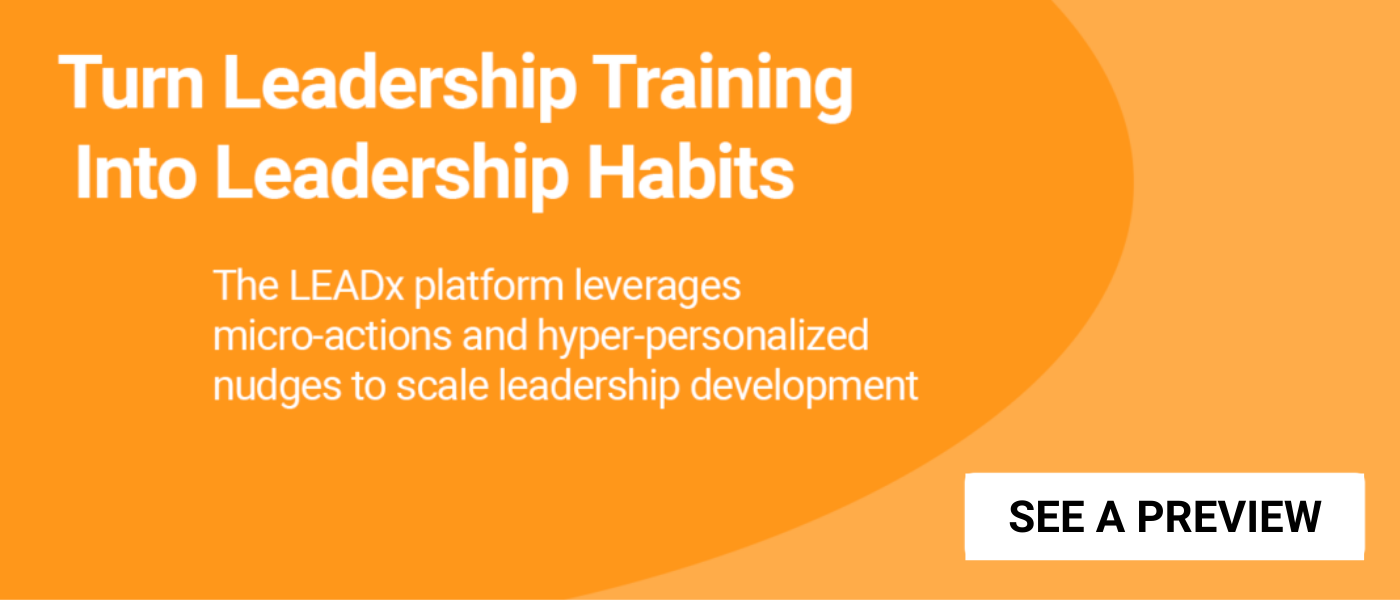
The 2024 LinkedIn Learning Report just came out. The 36-page report is based on a survey of 1,636 L&D and HR professionals. It covers topics like:
- The top priorities for L&D in 2024
- The top motivators for learners
- The bottom line benefits of a culture of learning
After reading through the report, I put together this article. It highlights five of the most important insights from the report. Along with each insight, I paired a real example of how a learning professional is putting these insights into practice in their daily work.
 1. The number one priority L&D professionals set for 2024 is to “align learning programs with business goals.”
1. The number one priority L&D professionals set for 2024 is to “align learning programs with business goals.”
This priority is obvious but daunting. Especially if you’re starting from scratch. If I could offer one piece of advice when it comes to business alignment, it’s to get started. You don’t need a people analytics team. You don’t need to be ready to publish a seminal article in HBR about the art of measurement. You don’t even need to succeed right away. Connect your training to one critical metric. Measure it. Train it. Track it. Then, you’ll have data to start to improve.
For example, at Collectors, the VP of Talent and Organizational Development, Dr. Eliza Wicher, honed in on one key behavior that she knew impacted business goals—Recognition. Their employee engagement survey indicated that recognition was the company’s greatest area of need. Wicher then began to devise systems that would encourage recognition. She launched a “shout out” tool in Slack where employees could offer positive recognition for one another’s accomplishments. She also put together an official company award for the best cross-functional projects. Instead of trying to boost “all employee engagement behaviors” at once, she focused her attention on one. On the single behavior with the most potential for upside. As employee engagement scores increase, so should key business-level metrics (like retention).
2. The number one reason LEARNERS want to spend more time learning? “To advance their careers.”
In other words, if you want to boost learner engagement, you have to show career-length value. There’s no one best way to do so. You might:
- Ask learners to reflect on career value before the program begins.
- Measure impact (i.e., promotion rate) so you can share it with your next cohort.
- Attach a digital badge to your program that carries beyond company walls.
At Grant Thornton, Director of Leadership Development Amy Happ linked deep completion of leadership training to a Credly digital badge. To earn a badge, leaders had to engage with a program in a more robust and interactive manner (i.e., extra projects, interviews, and work). What Happ found was that those who earned badges outperformed those who didn’t across all three of her performance indicators. First, those who earned badges exceeded their target number of billable hours by .9%, while those who didn’t earn badges fell short of their target by .2%. Second, those who earned a badge managed an average of 18% more monetary value in their engagements than those who didn’t. And lastly, on their leadership impact index (measured using a 180 survey), badge earners outperformed their counterparts by 2%. Credly badges extended beyond the walls of Grant Thornton, and the increased performance metrics encouraged future participants to pursue the badge.
3️. Leadership development is the number one way that companies offer career development.
This sounds great on paper, but where does that leave most of your individual contributors? Data like this indicates that if leadership development doesn’t develop individual contributors, no one will. Not to mention, from the perspective of a leadership development professional, scaling to the frontline is one of the simplest ways to gain a competitive advantage. Successfully reach individual contributors with quality leadership development, and you’ll have a bigger, more diverse pipeline of future leaders than just about any of your competitors.
At Ferring Pharmaceuticals, Director of Commercial Leadership Development Rob Daniel scaled in-depth leadership development programs to every level of his department, including individual contributors. To do so, he leveraged a blend of innovative technology and virtual training. For example, cohorts of learners would get together each month for a group coaching session. Then each week, he used a platform to send personalized nudges to reinforce learning and get participants to practice.
4️. Just 1 in 5 employees have the CONFIDENCE to make an internal move.
This is a big opportunity for leadership development professionals. Team up with your head of HR to train confidence-boosting self-leadership skills to all employees:
- Confidence
- EQ
- Growth Mindset
- Influence without Authority
Then, train your first-line leaders to hold career coaching conversations.
AllianceBernstein took this strategy a step further and created a program that trained both first-line leaders and individual contributors on how to have an effective career coaching conversation. AllianceBernstein built out a toolkit for employees to use to plan their careers, network with the right people, and learn more about career planning. They also built out an expected cadence of career conversations for managers and their direct reports.
5️. Companies with strong cultures of learning see +57% retention and +23% internal mobility.
How can learning professionals create a culture of learning? The key is to understand this: A culture of learning is so much more than a culture where employees “like to learn.” If your employees don’t feel like they have the time, support, or resources to learn, you don’t have a culture of learning. And even if your employees do have those things, if they don’t have that spark that enables action, if learning doesn't become a habit, then you don’t actually have a culture of learning. You have just the infrastructure.
That’s because a culture of learning is built on habits. Habits are the north star metric.
At Bentley Systems, for instance, 98.5% of all employees complete at least one training per year. The key to their success? An application-focused approach that helps get employees to apply what they learned on the job. Every program follows a cadence of “learn, reflect, apply.” As their Chief Colleague Success Officer puts it, “We design our training to be heavy on experiential learning. Our focus is on equipping our leaders at Bentley with the foundational behaviors that we see as required. That means establishing a common language and giving them the toolkit they need to grow.”
A Need to Simplify
It can feel overwhelming to parse through all these insights. If you’re starting from scratch or in need of a revamp, how exactly do you manage to create a culture of learning, align with business goals, and scale leadership development to your individual contributors all at the same time? The answer, quite simply, is that you don’t. Like the example in bullet one, you’re best off focusing your time, budget, and energy on the one or two things that will have the greatest impact. From there, it becomes much easier to expand your approach.







